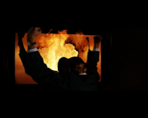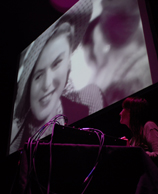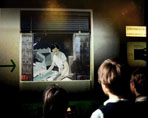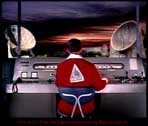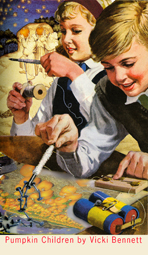Review of Music For The Fire (People Like Us & Wobbly) in Go Mag (July 2010)
Review of Music For The Fire (People Like Us & Wobbly) in Magic (July 2010)
Review of Music For The Fire (People Like Us & Wobbly) in Playground (June 2010)
Music For The Fire (People Like Us & Wobbly) in Huw Stephens’ Radio show BBC Radio 1 (June 2010)
Review of Music For The Fire (People Like Us & Wobbly) in Limewire Music Blog (June 2010)
Review of Music For The Fire (People Like Us & Wobbly) in MusicOMH (June 2010)
Music For The Fire (People Like Us & Wobbly) in Stuart Maconie’s Radio show BBC Radio 6 (June 2010)
Review of Music For The Fire (People Like Us & Wobbly) in My Old Kentucky Blog (June 2010)
Review of Music For The Fire (People Like Us & Wobbly) in Polychromic (June 2010)
Review of Music For The Fire (People Like Us & Wobbly) in Beyond The Noize (June 2010)
Review of Music For The Fire (People Like Us & Wobbly) in aaamusic (June 2010)
Review of Music For The Fire (People Like Us & Wobbly) in Little Village Mag by Kembrew McLeod (May 2010)
Music For The Fire gets Radio 1 airplay (May 2010)

Review in Film Comment magazine
Genre Collage, the new live set by People Like Us, is reviewed in an article by Jim Supanick in Film Comment magazine, take a look at the online version here.
http://www.filmlinc.com/fcm/jf10/peoplelikeus.htm
Download the magazine version here.
Film Comment website
Many thanks to by Jim Supanick.
People Like Us in another UbuWeb podcast
People Like Us features for a second time in Avant-Garde All The Time, an UbuWeb podcast. This time around the episode The Women Of The Avant-Garde (part 2) also features sound clips from Gertrude Stein, Yoko Ono, Louise Lawler, Shelley Hirsch, Lauren Lesko, Forough Farrokhzad, Pauline Oliveros, and many more.
Women of the Avant-Garde (part 2)
Background
Poet Kenneth Goldsmith presents selections from UbuWeb, the learned and varietous online repository concerning concrete & sound poetry, experimental film, outsider art and all things avant-garde. Schedule: Every Six Weeks.
Subscribe to the podcast Avant-Garde All The Time here.
A continued thank you, UbuWeb!
Feature in Read:My:Back
Very nice People Like Us article in the fantastic blog Read:My:Back. Thanks Mike!
http://hiptran.typepad.com/blog/2009/10/people-like-us.html
Interview – Alienated In Vancouver
Interview on CITR Radio
People Like Us recently did an interview with Bleek Swinney for the program “Exquisite Corpse”
Listen to the mp3 here. And the interview alone is archived here, in case the other mp3 ever disappears!
Also interviewed on this episode is Mark Hosler from Negativland.
Interview on BBC Radio 3
People Like Us were broadcast on “Twenty Minutes” on BBC Radio 3 yesterday – about the Light Music composer named Roger Roger, who we have played a lot of on radio shows. The interview features the usage of it on DO or DIY with People Like Us on WFMU.
Artist Talk at Tyneside Cinema, Newcastle
Archive material plays a central role within the work of artists Vicki Bennett and susan pui san lok, who both present film installations as part of the group exhibition Hit The Ground exhibition at the Hatton Gallery as part of this year’s Great North Run Cultural Programme.
Rebecca Shatwell, Director of AV Festival, will chair this talk at Tyneside Cinema, Newcastle with Vicki and susan as they discuss their latest works. Come along to find out more about how they have engaged with visual archives as part of their practices and receive a complimentary glass of wine.
This event also marks the launch of a new publication celebrating lok’s work Faster, Higher, published by Film and Video Umbrella, which features extensive visual documentation of this major multi-screen installation, alongside specially commissioned essays from critics Adrian Rifkin and Chris Berry.
Event presented in collaboration with Film and Video Umbrella.
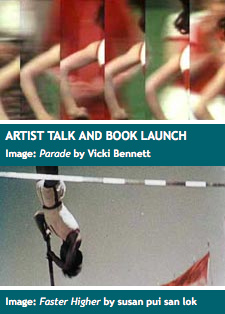
Critics Choice
Our concert at Cafe Oto on 1st August just got Critics’ Choice in Time Out.
http://www.timeout.com/london/music/event/154237/people-like-us-ergo-phizmiz

People Like Us featured in the latest UbuWeb podcast
All Avant-Garde All The Time – UbuWeb Podcast #9: The Sounds of the UK from the 1960s To Yesterday
Listen / Download
Produced by The Poetry Foundation, UbuWeb is pleased to announce the latest in its podcast series, focusing on a dozen of Ubu’s hidden treasures, highlighting audio works that you really should know about about but most likely don’t. With this podcast, we continue our series focusing on the sounds of different regions. Here the focus is on the avant-garde language-based audio coming out of the UK. Beginning with Bob Cobbing and making our way through the the swinging London scene of the 60s, and the political / punk work of the 70s, and ending up with the electronics + samples of today, we cut a path through the London (and beyond) underground. Featured here are works by Bob Cobbing, Neil Mills, Lily Greenham, Cornelius Cardew, Christopher Logue, Richard Long, Art & Language + The Red Krayloa, Furious Pig, Momus, People Like Us, and Caroline Bergvall.
We really recommend subscribing to this excellent podcast. Find out more about each episode here. Subscribe here.
People Like Us interview in Crawdaddy
Press Images
|
Click on images below to download the larger version (around 2MB).
Please credit where listed, otherwise credit People Like Us. For photographs of People Like Us with Ergo Phizmiz ONLY use these for JOINT advertisements. Please note: the film stills are from the original QuickTime movies, and therefore the size you get them is the size that they will always be, in 72dpi resolution. If you need it to be a different dpi then do go to Photoshop and resample the image as such yourself. We have resampled some for you. |
||||
|
ONLY use this row for People Like Us & Ergo Phizmiz |
||||









